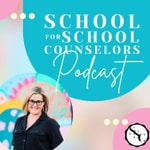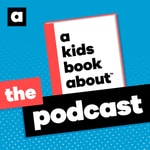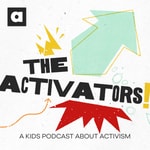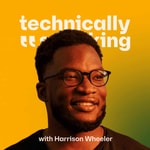The Teaching Behavior Together Podcast – Détails, épisodes et analyse
Détails du podcast
Informations techniques et générales issues du flux RSS du podcast.
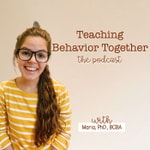
The Teaching Behavior Together Podcast
Maria
Fréquence : 1 épisode/11j. Total Éps: 65

Classements récents
Dernières positions dans les classements Apple Podcasts et Spotify.
Apple Podcasts
🇨🇦 Canada - howTo
27/07/2025#82🇨🇦 Canada - howTo
26/07/2025#56🇨🇦 Canada - howTo
25/07/2025#30🇨🇦 Canada - howTo
24/07/2025#17🇨🇦 Canada - howTo
09/07/2025#90🇨🇦 Canada - howTo
08/07/2025#68🇨🇦 Canada - howTo
07/07/2025#40🇬🇧 Grande Bretagne - howTo
05/06/2025#78🇨🇦 Canada - howTo
22/05/2025#96🇨🇦 Canada - howTo
21/05/2025#70
Spotify
Aucun classement récent disponible
Liens partagés entre épisodes et podcasts
Liens présents dans les descriptions d'épisodes et autres podcasts les utilisant également.
See allQualité et score du flux RSS
Évaluation technique de la qualité et de la structure du flux RSS.
See allScore global : 52%
Historique des publications
Répartition mensuelle des publications d'épisodes au fil des années.
3 Fun Ways to Incorporate Social Emotional Learning into Your Daily Classroom Routine
Épisode 65
mardi 12 avril 2022 • Durée 04:48
Hi everyone and welcome to this episode of the teaching behavior together podcast. Today we're going to be talking about how to incorporate behavioral and social emotional learning skills into your classroom in really fun ways.
The very first strategy I have for you for incorporating behavioral and social emotional learning skills in your classroom in a fun way would be to incorporate it into your morning meetings. If you already have morning meetings set up, set aside three to five minutes where you can incorporate some behavioral and social emotional learning targets. The easiest way to do this is have your students model different coping strategies that they engage in. It's really fun to have them submit different coping strategies they engage in in some sort of box or jar and then you randomly pull one out and whoever submitted that gets to model it for the entire class and then the entire class gets a chance to practice.
It's really easy to incorporate this type of strategy within your morning meeting because you already have the routine of your morning meeting this is just something you can add at the end really quickly or maybe in the middle to break up the different things that you do during your morning meeting. It is a great way to get in that social emotional learning right at the beginning of the day.
Another strategy you can use would be to incorporate some social emotional learning games with in your stations or rotations. So if you already have stations or rotations set up in your classroom maybe you do them three times a week or you do them everyday you can easily incorporate some social emotional learning games into those stations or rotations. Now you're probably thinking what social emotional learning games are out there for me to incorporate? Well I have a bundle for you on teacherspayteachers that includes several different social emotional learning games that you can easily incorporate into your stations or rotations.
Some examples of games included in that resource would be some tic tac toe activities, various memory games, emotions dominos, I-spy worksheets, and color by emotions worksheets. All of these different activities and games are great for stations and rotations. They have students working together or independently depending on how you have it set up. If they are working together you're also building in those collaborative working skills and teaching additional social emotional learning skills.
Lastly, another great way to work in social emotional learning skills into your classroom would be to incorporate some different read alouds that address different SEL skills. I did an entire episode on my top four behavioral social emotional learning read alouds to have for your classroom check out episode 61 to hear all about my favorites.
Resources Discussed in this Episode
Social Emotional Learning Games
Free Behavior Intervention Guide
Follow me on Instagram
Join my email list
One Simple Strategy for Dealing with Disruptive Behavior in the Classroom
Épisode 64
mardi 5 avril 2022 • Durée 03:31
Hi everyone and welcome to this episode of the teaching behavior together podcast. Today we're going to be talking about one simple strategy you can implement in your classroom tomorrow to start seeing a decrease in disruptive behaviors.
This simple strategy is called proximity and what it looks like is continually moving around the room while you are teaching.
I know this sounds super simple, how can just moving around the room decrease disruptive behavior? But when you think about it, it makes a lot of sense. Think about a time you were at a professional development or maybe a staff meeting and you had a text message and you checked your phone. If your principal or whoever was leading that PD walked over to you, you probably would put your phone away. this is the principle of proximity.
So what could this look like in your classroom? Essentially all you have to do is walk around your classroom while you're delivering content or students are engaging in different activities either independently or collaboratively with each other.
Yep it's that simple all you have to do is walk around your classroom and continue to circulate. If a student is engaging in disruptive behavior you might want to hang near that spot a little bit longer and allow them the chance to engage in that appropriate behavior.
Being in close proximity allows you to do two really important things and the first is probably the most important. First, it allows you to provide direct reinforcement, praise, or acknowledgement for engaging in that appropriate behavior when that student starts engaging in that appropriate behavior. Because you're in really close proximity you're able to give that feedback really quickly.
This also allows you to provide a really quiet redirection towards an appropriate behavior or a prompt towards appropriate behavior. This gives the student an idea of what they should be doing and then once they start engaging in that appropriate behavior you're in close proximity and can provide that reinforcement, praise, or acknowledgement.
Resources Discussed in this Episode
Free Behavior Intervention Guide
Follow me on Instagram
Join my email list
3 Easy Ways to Deliver Praise
Épisode 55
mardi 4 janvier 2022 • Durée 05:35
Hello everyone, and welcome back to the teaching behavior together podcast. Wow, it has
If you have been around for a while you know how much I talk about reinforcement. We often think of reinforcement as a tangible object we give someone for appropriate behavior. However, reinforcement is anything that occurs after a behavior that increases the behavior in the future. We know we have reinforced a behavior if it occurs again. Reinforcement happens all day everyday around us. One form of reinforcement can be praise. Often we hear things like, nice work, great job, awesome! However, praise is most effective if it is personal and specific. Here are three strategies to up your praise game.
The first strategy is called post it praise. Before your class, jot down a couple of praise statements you might give to your students. These might be general praise statements, like great work staying on task, or more specific praise statements related to the activity you are working on, such as nice job completing that puzzle. I would say, write down maybe 10 and pass them out as you are completing the activity. This is an easy, unobtrusive way to guarantee to you provide praise during your lesson or activity. Sometimes, we get so caught up in the lesson and answering questions and helping students we forget to acknowledge all the behaviors we want to see!
Another strategy would be to use some compliment cards. These are very similar to post it praise statements, but you might give these out at the end of the day. You might write 5 of them prior to the end of the day and give them to your students. You can compliment progress towards goals they have or if you saw them helping others in the classroom, any behaviors you want to increase you can compliment!
Finally, you can use some nonverbal acknowledgements. You can give students a thumbs up, a smile from across the room, a nod in their direction. These might seem like very small moments, however, for some of our students who do not like attention from a public praise statement, nonverbals can be the way to go. You can also create secret signals with some of your students. Believe me, this makes their day.
These are all examples of delivering praise in your classroom that does not involve you repeating yourself over with the same old same old, great work, nice job. They are all personal forms of praise that have the potential to mean a lot to your students. Try one to two out and let me know over on Instagram how they work for you!
One thing to note, praise is not a form of reinforcement for everyone, if you do not see and increase or maintenance in behavior, praise might be reinforcing for that student, don’t worry though, subscribe to this podcast so you are notified each week when a new episode comes out. There are many more strategies to come!
Resources Discussed in this Episode
Free Compliment Cards
Free Behavior Intervention Guide
Follow me on Instagram
Join my email list
Thinking About Getting Your Doctorate Degree?
Épisode 54
mardi 25 mai 2021 • Durée 40:06
If you are thinking about getting your doctorate degree and wondering what it is really like, this episode is for you. I get to chat with Lauren from @thinkdyslexia about getting our doctorate degrees. She has and doctorate in education (Ed.D.)focused on the practical aspect of serving as a change agent with the field. I have a PhD. in special education and applied behavior analysis and focused on conducting and publishing research related to evidence-based practices within the field.
Despite our different degrees, our experiences were pretty parallel. We both decided to pursue a doctorate degree while we were getting our undergraduate degrees. We both went to three year programs. We both agree that the workload is probably not the most challenging aspect of getting your degree.
We did have very different “whys” when getting our degrees which highlights the endless possibilities for going back to school and pursuing your doctorate. We delve deep into our whys and discussion how our motivation kept us going during the not so fun parts of the program.
In this episode we chat about what we found most challenging and most rewarding about getting our degrees. We also talk about the financial aspect of pursing higher education and the different options that may be available to you as your are navigating the finances. We talk about how life can get in the way, but how we stayed the course and finished our programs on time. And we give you our advice for getting a doctorate degree.
If you have ever thought about getting a doctorate degree, we hope you find this episode helpful! Feel free to reach out to either one of us and ask any questions you might have!
Q & A: What Does My School Based FBA Process Look Like?
Épisode 53
mardi 18 mai 2021 • Durée 18:33
On this episode of the podcast I answer some frequently asked questions. I usually will ask over on Instagram if anyone has questions, they would like to be answered on the podcast, so if you have questions, go follow me over on Instagram so you can get your questions answered on the next Q an A episode.
In this episode I answer questions such as what my school based FBA/BIP process looks like. This is such a great question, because often this can look different from a home or clinic based FBA/BIP. Because I get this question all the time, I decided to create a school based FBA/BIP training for educators to learn about this process so that they can maximize the success of their students. If you are interested in that training, join my email list so you are the first to know when the training launches!
Another question I get all the time is how to find a BCBA supervisor in schools. This can be pretty tricky, and while BCBAs are working more and more in schools, there still are not enough of us in schools. A lot of teachers would like to become BCBAs but have a hard time finding supervisors. In the episode I talk about four different ways you can find a school based BCBA supervisor so you can get going on completing your hours and bring quality behavioral instruction to your school and district.
If you ever find yourself in a situation where you feel like you are broken record in your classroom and giving the same prompts over and over again. I’ve got you covered, I answer this question and how I would address this problem in your classroom so you can spend more time teaching and less time reminding. The strategy? Well it involves two parts, using visual or gestural prompts and teaching self-monitoring skills to our students, hear all about this in the episode right now!
Lastly, I answer the pressing question of what to do if you work in a school or are on a team where staff do not want to use rewards. This can be pretty tricky. I typically recommend talking with your multidisciplinary team and really determining what is best for the student. I also recommend sharing with the team the big picture related to rewards and reinforcement. Our goal is usually to teach the student skills so they contact naturally occurring reinforcement and the rewards that we are using in the beginning of our programming will be faded out over time so that the behavior is maintained by naturally occurring reinforcers.
I love answering all of you questions, so make sure you are following me over on Instagram so you see the next time I am doing a Q and A episode!
Resources Discussed in this Episode
Free Behavior Intervention Guide
Follow me on Instagram
Join my email list
Strategies for Disruptive Classroom Behaviors
Épisode 52
mardi 11 mai 2021 • Durée 12:36
Strategies for disruptive classroom behaviors can be challenging to implement. In this episode I talk about my go to strategies for disruptive classroom behaviors that will help increase behaviors you want to see in your classroom.
First I want to start off by just defining what I mean by disruptive behavior. In most instances a disruptive behavior will be defined as anything that interrupts or takes away from the learning of others.
The first strategy I typically recommend would be having a conversation with the student about the behavior. During this conversation I would ask the student about the behavior they are engaging in and let them know how the behavior affects others in the classroom. Now I do not in any way mean you should talk with the student and “blame” them for their behavior or for how it affects others, but having a conversation with the student helps you build rapport and can help the student build perspective taking skills. Believe it or not, some students might not realize that their behavior affects others or that it is disruptive in the first place. A conversation and a collaborative plan could go a long way in the classroom.
Another strategy would be giving the student a piece of paper, dry erase board, post it, anything they can write on during class. Whenever they have a thought have them write it on the document and make time for them to share those thoughts with you or a peer later. This strategy works best in situations where the disruptive behavior takes the form of shouting out during the class or discussions with peers during the class. Our students want to be heard, but we also need to deliver a lesson to our class. This can be a great way to teach students some self-regulation skills and also can help them determine which information is really important and something they want to share with you or some peers.
Proximity is another great strategy for disruptive behavior. When using proximity you are placing yourself close to the student or students. This does a couple of things, first anytime someone comes closer to someone the behaviors usually stop. This is how proximity works. Additionally, when you are close to students you have an easier time prompting them. I typically recommend discrete or quite prompts as no student likes to be called out in class and doing this can lead to a power struggle, and being close by allows for this to happen.
Any time you can use a visual or gestural prompt over a verbal prompt, I would do that. At times when we use verbal prompts it invites a verbal response back. Say for instance you redirect a student using a verbal prompt, which then get’s a reply-“I'm not doing that” first, this student is probably embarrassed for being called out. Second this could start a power struggle. Third, your verbal prompt could be further disrupting the environment. So in these situations, a gestural or visual prompt can be very helpful.
I know what you might be thinking at this point, what about situations where it seems like the student is engaging in the behavior to cause a disruption or on purpose. In these situations, I would first say that coming at it from the mindset that the student is engaging in the behavior on purpose might cloud our ability to provide strategies and supports to the student. In these situations, I would assess lagging skills and determine where we can provide explicit instruction on replacement behaviors. You can also explore conducting a functional behavior assessment to determine the function of the behavior and teach a functionally alternative replacement behavior.
Resources Discussed in this Episode
Free Behavior Intervention Guide
Follow me on Instagram
Interested in Becoming and Adjunct Professor?
Épisode 50
mardi 4 mai 2021 • Durée 39:02
On this episode of the podcast we discuss how to become an adjunct professor. I get to chat with Caitlin from @beltransbehaviorbasics all about how we became adjunct professors and what is like teaching at the college level.
In this episode we discuss how we both became adjunct professors and ways you can explore this option as well. Caitlin is teaching at the University she attended and knew someone else teaching there which is how she started teaching her college classes. I emailed several program directors and heard back from two of them and started teaching at those two Universities.
If you are trying to become an adjunct professor, we recommend looking at local universities as they often post lecturer or adjunct positions. Another great strategy is to submit an application and email the director of that program to make sure the application is getting to the right place. You can also attend local conferences where Universities have booths and get your face in front of directors or professors in that program. I recommend bringing your resume and cover letter with you so they have it on file.
If you are curious as to what being an adjunct professor entails, we chat about that too. One of the most frequent questions I get is how much time does it take week to week to be an adjunct professor? Here is the thing, this will vary depending on a couple of different factors such as how many times you have taught that class, if you prep your content before the course starts, and if you prep activities before the course starts. Caitlin and I are both huge proponents of prepping the content before you course even starts. This way your week to week time commitment surrounds that actual class, answering questions, and grading assignments. This is much easier when you start teaching and have taught the same course a couple of times. In this situation you are often just making adjustments to the content you already have created. Over time you will get better and better at this and the course set up will take less time overall.
Another question people often ask is about imposter syndrome. In the episode Caitlin and I chat about how everyone experiences imposter syndrome and if you have a passion for a specific topic and have been practicing for a while, you probably have the ability to teach that topic. We also highly recommend looking at your reviews and taking into account what students say and using that to improve your class. One thing we both recognized this past semester is that our students do not like using zoom break out rooms, they would much rather do activities as a whole class. This is great information to have and can help you adjust your teaching plan.
Overall, we both love being adjunct professors and talk about what joys it brings us as educators and why we have been both doing this for over four years at this point. If you have ever been curious as to how to become an adjunct professor or what it looks like this episode is for you!
Resources Discussed in this Episode
Free Behavior Intervention Guide
Follow me on Instagram
Strategies for Prioritizing Behavioral Interventions In Your Classroom
Épisode 49
mardi 27 avril 2021 • Durée 20:20
Prioritizing behavioral interventions can be the key to behavioral success in your classroom. I am going to give you key strategies you can use to assess and prioritize interventions in you classroom. The main goal of our intervention implementation plans should be that we are implementing plans that are feasible for us so that we are carrying out the intervention with fidelity.
Assess your classroom support. The very first thing I want you to do is assess you classroom support. To do this, outline your schedule for the day and identify when additional support like paraprofessionals and teaching assistants are in your classroom. If you have students who move in and out of your classroom throughout the day, also note that in your outline. Then you are going to identify what activities occur at the different times of the day. Based on this schedule, you are going to map out some different whole group or small group interventions you can carry out based on the times you have the support necessary to do so.
Prioritizing Behavioral Interventions. In order to prioritize behavioral interventions, go through your day and identify all of the supports, strategies, and interventions you provide. Once you have those identified, assess them in terms of skills they teach or how they support the independence of your students. I always prioritize behavioral interventions that focus on these goals. If you cannot identify how the support, strategy, or intervention meets these goals, I would put it on the back burner and bring other interventions into the forefront.
Batching your Supports. Another great way to increase feasibility in your classroom is to batch supports. What I mean by this is create a bank of supports you provide that are ready to go at any time. For this, I am talking about any antecedent supports like visual schedules or choice boards and consequence supports like reinforcers.
Batching Choices. Provide choice is a very powerful intervention, however, a lot of times I think we think tend to think of choices on the fly which can be difficult to do. Go through your day and identify the different activities you engage in. Then for each type or category of activity identify 2-3 choices you can offer. Use this as a launching place for when you provide individual choices. This reduces the amount of decisions you need to make and gives you a place to start so when a student is not completing a task you know what types of choices you can give and how you can support that students without starting from scratch.
Systematizing Your Classroom. As much as you can identify systems and procedures around the tasks and activities you do in your classroom. Then build strong feasible methods for engaging in then. The important thing is you are developing these systems and procedures to increase feasibility within your classroom. If you see another teacher doing something really well, ask them what they procedure is for doing that, this can give you a place to start and then make it your own. If you are just starting out with this, identify two are three activities or tasks related to your job and create a system or procedure around them. That wraps up the strategies I have for you around prioritizing behavioral interventions in your classroom. Again, a lot of this has to do with creating feasibility within your classroom to carry out these interventions and supports.
Resources Discussed in the Episode
Free Intervention Implementation Checklist
Follow me on Instagram
Tips for New Teachers: Building Social Emotional Learning Skills with Rebecca
Épisode 48
mardi 20 avril 2021 • Durée 41:51
If you are a new teacher, this episode is a must listen. We hear all the time about how important social emotional learning skills are for our students, but I would be willing to bet that you did not have a course in school that taught you how to focus on these skills…In this episode I chat with Rebecca from @missreadysetteach about her tips for new teachers as it relates to building social emotional learning skills. She focuses on her top 3 tips which will be hugely beneficial to you as a new teacher.
We talk about emotional intelligence, teaching collaboration, and working check ins into your routine. The best part….she is a high school teacher! That is right! Middle and high school teachers often feel left out of the social emotional learning conversation under the incorrect assumption that our students already have these skills. Well in this episode we chat all about these skills across different grade levels!
In terms of emotional intelligence, we chat about how when students are elevated in anyway they probably will not be able to process your lesson. Makes sense right, when we are upset it is really hard for us to process information, problem solve, make decision etc. It is the same thing for our students. It can be really challenging for them to process information or engage in tasks when they are upset or feeling various emotions. But, often times we feel like we have to hit all our teaching targets and we have to have all our students on task and engaged. However, we give you strategies for handling these situations in your classroom that allow the student to build strong skills around emotional intelligence. The life skills the students will learn from being able to tell you that they are upset of having a bad day and processing that emotion will serve them well into adult life.
In terms of teaching collaboration amongst our students Rebecca gives great guidance on directly teaching this skill. Kids love working in groups and collaborating usually, but at times they might be lagging some skills that makes this an effective process. You will take away some great strategies like teaching students what it means to contribute to the group and providing roles within a group to encourage collaboration.
Lastly, we talk about check ins. This can be such a great way to build relationships with your students. In elementary classrooms we can do check ins during morning meeting and make sure we follow up with students throughout the day. Rebecca talks about how she works check ins into her assessments so she can follow up with students when they are feeling great and when the need extra support. Believe me when I say this, this will be a game changer when it comes to relationships. Relationships with our students are built over time, check ins are a great way to build these relationships.
When it comes to being a new teacher, teaching social emotional learning skills can be daunting. If you take these strategies, you will have a great starting point to focus on in your classroom. Gone are the days of feeling so overwhelmed with behaviors and social emotional learning skill as a new teacher. If you are looking for more strategies to put in place as a new teacher, definitely subscribe to Rebecca’s podcast Ready Set Teach for tips one all things related to being a new teacher! Also, make sure you check out the free guide I have for teacher related to behavioral interventions. I give you 20 pages worth of behavioral interventions with descriptions and examples across the grade levels.
Resources Discussed in this Episode
Free Behavior Intervention Guide
Follow me on Instagram
Strategies for Work Refusal Behaviors
Épisode 47
mardi 13 avril 2021 • Durée 21:16
Work refusal behaviors can be challenging to intervene upon. There can be several different reasons why students might be refusing to complete work or avoiding work in general. With all behavioral interventions we want to focus on addressing the behavior across the antecedent, behavior teaching, and consequence domains.
Antecedent Strategies. First, we can modify the assignment or task based on the skill area. If this is an area of weakness we can modify the task so the student can be successful with the assignment. If this is an area of strength we can also modify it so the student can be engaged and successful with the assignment.
Modes of Completion. We can provide alternative assignments or alternative modes of completion. I often provide choices to students about how they want to complete the task. Can they record a response instead of writing out their answers? Can they answer all the questions on a white board and someone else transfer them to a hard copy? Can they work with a peer?
Breaking Down Tasks. Breaking down the task into micro steps or into a to do list format can be very helpful. This can give students clear steps for each aspect of the task. I try and make these steps as small as possible.
Behavioral Momentum. With this strategy, we start with tasks we know the student can complete and then move onto more challenging tasks. This builds momentum towards the behavior we want to see by building on success. For example, say you are doing a math activity, I might start with problems the student has already completed successfully before moving onto more challenging or new problems.
Choices. I challenge us to go beyond the do you want to write with a pencil or pen choice and move into meaningful choices. For example, do you want to complete the task alone or with a partner? Would you like to complete 5 or 10 problems? Would you like me to write the sentence or would you like to write the sentence? These choices are more meaningful and can build stamina towards work completion.
Behavior Teaching Strategies. I would focus on skill building in areas of weakness if there are any. Small group tier 2 or intensive tier 3 interventions should be provided for students struggling with a content area. Executive functioning plays a large part in work completion, therefore building all skills related to executive functioning is also a great idea.
Consequence Strategies. If students are completing work and task that they previously refused I usually would default to providing students with some sort of break. Therefore, they were engaging in other behaviors before that allowed them to escape a task, now they are engaging in work and we are reinforcing that with a break. We are now building the contingency of I complete work I get a break instead of I engage in behaviors and escape the task. The student can engage in preferred activities during their break.
We have to recognize that we cannot force a student to engage with a task, in fact we cannot force them to do anything. Therefore, the most important thing to focus on are the antecedent and behavior teaching strategies. These may take some time to work well, and we need to be patient. What I always hesitate to do is take something away. Often if a student is not engaging in a task they need support with skills as opposed to take something like recess or choice time away.
Again, strategies for work refusal behaviors can be complex, and often times we need to attempt several of these strategies in combination to maximize student success.
Resources Discussed in this Episode
Free Behavior Intervention Guide
Follow me on Instagram
